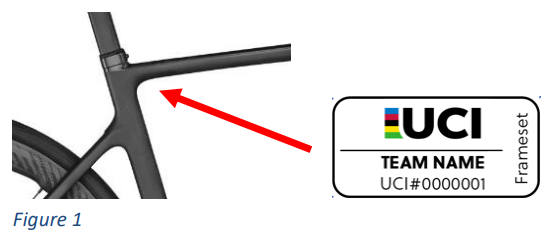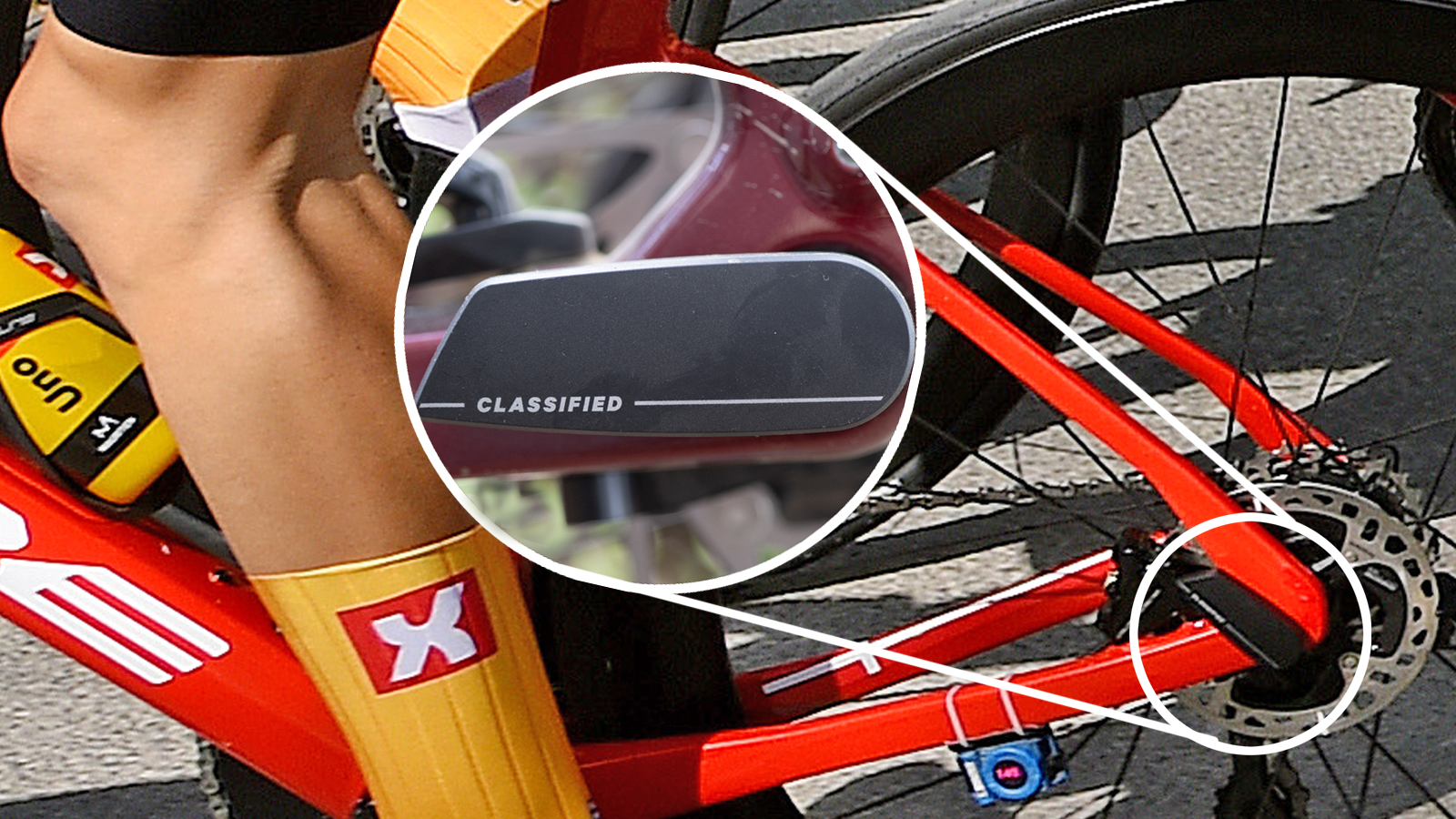Headache for teams as UCI introduces Tour de France, Tour de France Femmes 'equipment registration'
Framesets, wheels, handlebars, clothing and helmets all subject to prior registration, with just weeks before the deadline

The UCI has introduced what it's calling a 'Road Equipment Registration Procedure' ahead of this year's Tour de France and Tour de France Femmes Avec Zwift, which will see all teams forced to register every piece of 'critical equipment' they intend to use.
In a document published to the equipment section on the UCI website, plans are outlined that will require teams to register a vast array of equipment prior to a fast-looming deadline, before needing to submit it all for inspection and RFID tagging in the days prior to the respective races.
The 17-page document, a draft of which was originally leaked by Escape Collective, outlines a procedure that each of the participating teams will need to adhere to in order to be allowed to race. It includes the prior registration of critical equipment — defined by the document as framesets, wheels, handlebars, time-trial base bars, time-trial extensions, clothing, and helmets — via a form on a new online portal.
The aim of the new procedure, according to the document, is to ensure that the existing UCI regulations are properly adhered to, in turn promoting "fair and equitable access to equipment" and ensuring a "level playing field for all competitors."
The procedure currently applies solely to the two Tours de France, and the document confirms that the newly outlined procedure "will not be enforced for other road events on the 2023 UCI International calendar."
Whether it will be extended to more races in 2024 or beyond is unconfirmed. Cyclingnews has reached out to the UCI for clarification, and at the time of publication, we have not received a response.

Equipment registration explained
For each piece of critical equipment that a team intends on using at the race, a representative from the team will need to fill out an online form to supply information.
The latest race content, interviews, features, reviews and expert buying guides, direct to your inbox!
That information will include 'Equipment Identification', which covers the brand; model; UCI code where applicable for framesets, forks and wheels; and size where applicable.
Pertinently, the form will also ask for 'Commercial Availability', which comprises the product's distribution channel; dealer contact information; email address; telephone number; retail price; whether the product is currently commercially available; and the date of intended commercialisation and the prototype number for those that are not.

This looks set to create a mountain of administrative work for teams in the run-up to the biggest races of the year, in what is no doubt already an incredibly busy time period.
Deadlines are looming
Men's teams have until June 2 to register their equipment, while the women's teams have a little longer – until June 17 – to register theirs, courtesy of the Tour de France Femmes being slightly later in the calendar. Any equipment not registered in time will not be valid for use at the respective races.
Access to the portal can be extended to manufacturers in order to supply the necessary information, but the onus falls on the teams to ensure every product is registered correctly, accurately and on time.
Inspection and spot checks
Once registered, representatives from the UCI will conduct an onsite inspection at team hotels in the days prior to the Grand Depart, to ensure that each product adheres to the UCI rulebook.
For framesets, teams will be required to submit every single bike they wish to use at the race. That includes each rider's race bike, spare bikes, time trial bikes, custom-colour leaders' bikes, prototypes, and any others they may wish to use. Each bike will then be tagged with a Radio Frequency Identification (RFID) tag.
For other critical equipment, such as wheels, handlebars, helmets and clothing, only one item per model line will need to be inspected.
Representatives may also conduct random 'spot-checks' at any time during the respective races.
RFID tags on bikes

Concerned about the durability of the RFID tags, the UCI recently rolled out a test event at the recent Tour of Romandie.
There, teams were asked to supply "two to three" road bikes to be fitted with the tags, to see how they stood up to "adverse weather conditions, exposure to high-pressure cleaning solutions and bike transportation on team car roof racks."
No information was shared as to the success of the trial, but the fact that the equipment registration procedure is going ahead suggests no issues were found.
The tags in question will measure 18mm x 43mm, and will be positioned on the underside of the top tube near the seat tube. The document states that these tags will store "information about the bicycle they are attached to" though doesn't confirm exactly what that information will be.
Mitigating circumstances
The document outlines a variety of 'practical example' scenarios, in which mitigating circumstances are outlined. For example, if a team were to suffer a high number of broken frames in a crash, the team could contact the commissaire's panel to request replacement RFID tags.
The same goes for custom-painted leaders' bikes, should they not be submitted during the initial inspection.
No more secrets
In another of the aforementioned examples, the UCI also presents a scenario in which a brand wants to keep a new product under wraps until its launch.
It reads: "Team ABC and Sponsor X have been developing a new TT helmet together. Sponsor X asks Team ABC not to register the helmet on the Platform (Step 1) to keep it a secret until the day prior to the start of the TdF.
"During the Inspection of Critical Equipment (Step 2), Team ABC presents the TT helmet. The UCI representative conducting the inspection highlights the fact that the helmet was not registered on the Platform (Step 1).
"The UCI representative informs Team ABC that the helmet is non-compliant and must not be used during the TdF."
Given the propensity for brands to launch products in the run-up to the Tour de France, this has the potential to significantly disrupt brands' plans, potentially even leading to leaked products and broken embargos.
What's more, it is reported that each team's equipment register will be visible to other teams, meaning that secretive launches and innovations could be stifled.
Why?
As mentioned above, the UCI says the purpose of this new Equipment Registration Procedure is to ensure its existing regulations are properly adhered to. Specifically, though, the latter half of the form relates quite closely to article 1.3.006 of the UCI's technical regulations.
This article essentially states that products used must be available for purchase by the general public, or otherwise be subject to a prototype authorisation from the UCI and then made commercially available within 12 months, at a retail price that doesn't render it "de facto unavailable to the general public."
From this alone, it would appear that the UCI is trying to mitigate against teams using prototype products being used in the Tour that aren't then being followed through to production.

It's hard not to be curious about how strictly the pre-race inspections will follow the UCI rulebook, though.
Examples such as the Hope HB.T track bike, and Filippo Ganna's €17,000 custom-made time trial extensions are technically available for purchase as set out by the rulebook, but at prices that certainly blur that line of being 'de facto unavailable'.

What's more, as much as everyone enjoys reading about the new tech we've spotted in the peloton (and as much as we enjoy writing them), secretive innovations rolled out on race day undoubtedly present a sizeable headache to the UCI, who are forced to scramble to subsequently verify – or ban – its use based on limited information and likely no hands-on experience with the product in question.
Separately, however, while it is reported that each team's register will be available to competitors to view, on the assumption that this isn't available until at least after the deadline, then there would still be motivation for teams to innovate and bring new products to races.
These innovations might be well-known by the time race day comes around, but it should theoretically still be too late for competitors to copy, and therefore nullify the advantage earned. There should still be plenty of marginal gains for bike nerds like us to salivate over, then.

Josh is Associate Editor of Cyclingnews – leading our content on the best bikes, kit and the latest breaking tech stories from the pro peloton. He has been with us since the summer of 2019 and throughout that time he's covered everything from buyer's guides and deals to the latest tech news and reviews.
On the bike, Josh has been riding and racing for over 15 years. He started out racing cross country in his teens back when 26-inch wheels and triple chainsets were still mainstream, but he found favour in road racing in his early 20s, racing at a local and national level for Somerset-based Team Tor 2000. These days he rides indoors for convenience and fitness, and outdoors for fun on road, gravel, 'cross and cross-country bikes, the latter usually with his two dogs in tow.